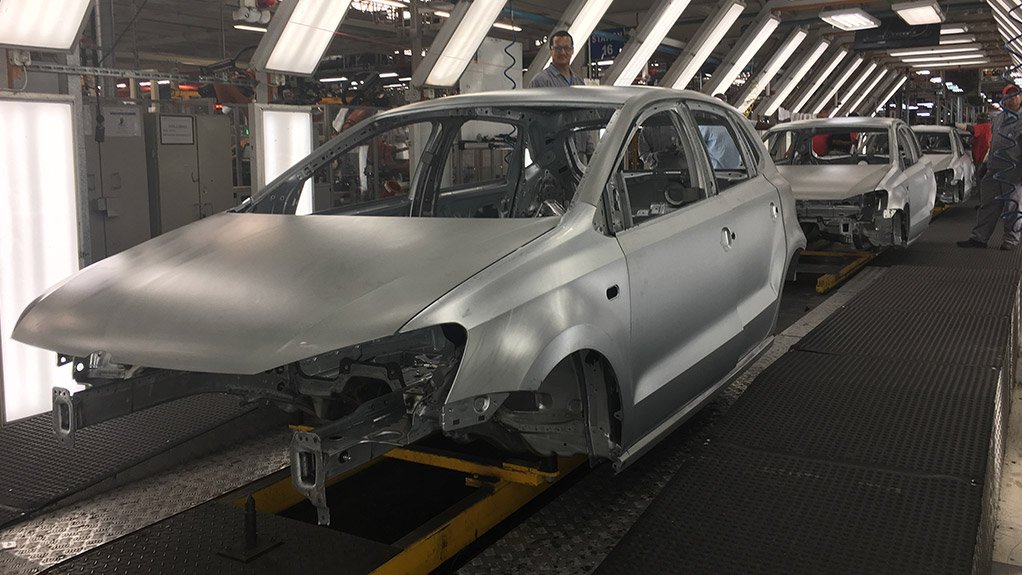South Africa’s GDP increased by 0.8% in the second quarter, following an increase of 0.1% in the first quarter of the year, Statistics South Africa has reported.
The manufacturing industry increased by 1.8%, contributing 0.2 of a percentage point to GDP growth, with seven of the ten manufacturing divisions having reported positive growth rates. The largest positive contributions were reported for the petroleum, chemical products, rubber and plastic products division and the motor vehicles, parts and accessories and other transport equipment division.
The trade, catering and accommodation industry increased by 1.7%, contributing 0.2 of a percentage point. Increased economic activities were reported for retail trade, motor trade, accommodation and food and beverages.
The mining and quarrying industry increased by 3.7%, contributing 0.2 of a percentage point. The largest positive contributors were platinum group metals, gold and chromium ore.
“South Africa is showing resilience in its industrial and resource sectors. This is a signal that domestic production is picking up, and sectors like mining and manufacturing are finally translating capacity into real economic growth.” says PPS Investments portfolio management and analytics head Mark Phillips.
The transport, storage and communication industry, however, decreased by 0.8%, contributing -0.1 of a percentage point. Decreased economic activities were reported for land transport and transport support services.
The construction industry also decreased, by 0.3%, with decreases reported for residential buildings and non-residential buildings.
NWU Business School economist Professor Raymond Parsons comments that, as broadly expected, the latest GDP figures confirm that the incipient economic recovery has accelerated and widened in the second quarter by involving several more sectors in supporting economic growth.
"This is much better news on the growth front for some time. Both household and government spending were positive in the period under review and were the main drivers of an improved GDP performance. The challenge now is getting the economy up to the Government of National Unity’s growth target of 3% in the medium term.
"GDP growth is still expected to be only about 1% for 2025 as a whole and is not good enough for South Africa’s urgent socioeconomic needs. As high-frequency data in the third quarter of 2025 still seems mixed, there remain potential vulnerabilities in the present economic outlook. One worrying factor is that exports already showed a negative trend in the second quarter, at a time of pending further global uncertainty.
"Another weak link in the economic scenario is the continued negative performance of fixed capital formation, which is the kingpin of sustained economic growth. South Africa, therefore, now needs to build on - and expand - the incipient economic recovery. Both new global headwinds, as well as continued domestic policy challenges, require economic reforms to go further and faster and boost investor confidence. This will help to strengthen economic resilience and maximise investment and growth," he adds.
Financial services provider Nedbank's economics unit, meanwhile, says it expects the economic recovery to gain traction in the second half of the year.
"Households will continue doing the heavy lifting. Subdued inflation and lower interest rates will bolster real incomes, ease debt burdens and support household spending.
"The upside will be capped by slower government spending due to fiscal constraints, uneven fixed investment and a weaker trade balance as global growth softens, commodity prices remain subdued and higher US tariffs and persistent policy uncertainties take their toll. Altogether, we expect GDP to grow by 1.2% in 2025, only moderately better than 0.5% in 2024," the unit states.
EMAIL THIS ARTICLE SAVE THIS ARTICLE ARTICLE ENQUIRY FEEDBACK
To subscribe email subscriptions@creamermedia.co.za or click here
To advertise email advertising@creamermedia.co.za or click here











